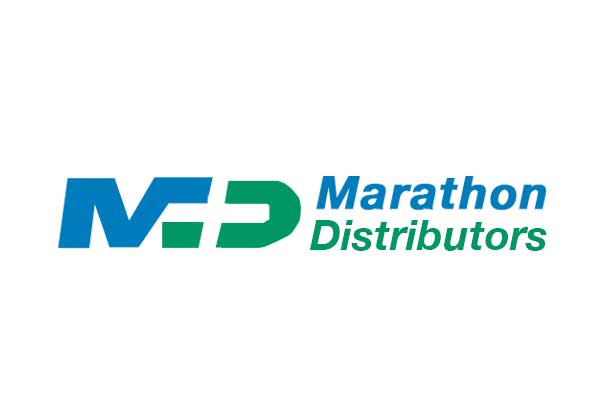
China’s seafood imports set to carry on surging
Content by MW Communication
Already in 2012 the world’s third largest importer of seafood, the UN's Food and Agriculture Organization predicts that China in 2016 is set to become the world’s top destination for seafood imports. Key economic data and trends point to further growth in domestic consumption and, despite indications that the country’s economy is slowing, it has nevertheless trebled in size since 2001, with Forbes magazine predicting it will surpass the US in scale in 2018.
This growth in China’s seafood imports comes at a time when the seafood sector generally is in excellent shape, growing at a faster rate than any other protein industry with the world’s top 150 seafood companies generating $107bn in sales in 2015.
Unsurprisingly, China’s top suppliers are almost all situated around the Pacific basin. In 2013, Russia was in first place with a 17.8% share followed by the US (15.3%), Peru (12.1%), Chile (5.3%), Norway (5.1%) and Canada (4.8%), with other seafood imports being sourced from over 100 other countries. That year in value terms, its main seafood imports included flours and meals of fish, used in animal feeding ($1.7 billion); frozen Alaskan pollock ($883.6 million); frozen cuttlefish and squid ($445.9 million); and frozen cod ($434.0 million).
This astonishing growth in seafood imports is explained by a variety of factors:
Firstly, higher Chinese incomes have fuelled an increase in domestic demand: between 2001 and 2014, real wages in China rose fourfold and this trend is ongoing. Data from the Economist Intelligence Unit point to national average urban incomes rising by around 70% between 2012 and 2017, from US$6,291 to $10,791.
Moreover, this increase in domestic demand includes that for high-end seafood imports, such as lobsters come from France, Canada and the US; abalones from South Africa, Australia, and New Zealand; red shrimps from Ecuador and Argentina; king crabs from Russia and Chile; salmon from Chile, Ireland, Scotland, and Norway; and oysters from America, France, and New Zealand. Such products are obviously favoured by wealthier Chinese consumers, but the country’s emerging middle class is also demonstrating a growing appetite for these seafood imports.
An indication of this trend is the recent news report that the Russian Caviar House has begun exporting black caviar to China, with regular annual shipments of 100-150 kilograms currently being planned, according to company director Saodat Sultanova.
The second key factor explaining the growth in China’s seafood imports is that its domestic production capacity has been extremely adversely affected by pollution and thus cannot meet this increase in demand. Indeed, despite it being the world’s biggest seafood exporter, double in value terms of its nearest rival, Norway, the environmental impact of its breakneck economic growth in the last 20 years has created an insurmountable environmental obstacle.
In March this year, China’s Agriculture Minister Han Changfu said: “… the increase in China’s seafood output has come at the expense of the country’s natural environment.” Han also said that the production capacity of the country’s environment has been stretched to breaking point, with various measures undertaken this year to address the situation. These have included the launch of an effort to protect and repair its freshwater fishery resources, an increase in its annual fishing ban on the Yangtze River from three months to four and an extension to the ban to local rivers and lakes. Such actions will inevitably impact negatively on aquaculture hubs like Jiangsu and Hubei, since the Yangtze flows through those areas and means that China is having to source its seafood elsewhere.
Such environmental issues also affect the safety of China’s domestic seafood production, leading to consumers avoiding potentially harmful products.
In 2012, the Ministry of Agriculture (MOA) published administrative measures on the control of agricultural product (including aquatic) quality and safety, which included regulations on risk monitoring and sampling. Also since 2012, a further regulation is that food and beverage exporters to China are required to register through the General Administration of Quality Supervision, Inspection and Quarantine (AQSIQ)
Despite these measures, in November 2016 it was reported that Chinese seafood retailers are increasingly nervous about stocking domestic seafood, which may have excessive traces of antibiotics. Sales outlets are also beginning to eschew selling live seafood, a choice favoured in particular by older Chinese shoppers, who traditionally bought these products from supermarkets and wet markets. Retailers say they are concerned about costly closures caused by failed safety inspections by food hygiene officials. Meanwhile central government affirmed that the safety scare wasn’t due contaminated water in live fish tanks.
This explains another key trend: the growing importance of place of origin for Chinese consumers. The market for seafood from Canada and Alaska for instance have continued to develop, with northern prawns and Canadian lobsters especially popular. Indeed, advertising the places of origin is set to become an ever more important aspect of marketing seafood imports in China, especially where the source is trusted for its rigorous temperature controls and requirements.
Demand for such products is further stimulated with Chinese consumers’ own ongoing positive experience around product quality, texture, safety, etc, all of which is inextricably linked to effective temperature control monitoring throughout the cold chain process.
The regulatory framework for importers is complex. Beyond having to satisfying country origin export regulations around documentation (commercial invoice, packing list, export health certificate, certificate of origin, etc), all products on cross- border platforms such as Kuajingtong, should meet all the requirements set by Chinese regulations, including Chinese language labelling, certification and registration standards.
Also that year, China updated its Food Safety Law, affecting ingredients, testing methods, manufacturing, contact substances, packaging, and nutrition labelling. Two important regulations, including a “Food Traceability System” and “System of Real Name” have been established and allow consumers to require a “continuous compensation”.
Lastly, Chinese regulations can change quickly and therefore it is important for importers to remain up to date with all policy changes. For example, since 2014, China has banned the imports of whole salmon, but not processed salmon.
That said, this know how around regulations is clearly not an obstacle to the many companies already exporting seafood products to China and a major trend moving forward is predicted to be around the development of e-commerce for the sale of imported seafood products.
Fan Xubing is the founder and president of Sea Bridge Marketing in Beijing and has worked for many years as a partner in promoting sales of imported seafood in China, especially online. He says that 2015 saw a rapid development of e-commerce business of imported food generally. Sales of such products including seafood have increased by over 50% and Chinese consumers are becoming accustomed to buying seafood products online.
He also says that 2016 has seen many improvements in cold chain logistics, tighter controls over temperature and more effective regulation related to seafood safety. He points to e-commerce firms such as Jingdong and Womai, which increased their investment in their cold chain logistics, and how it has become increasingly common for Chinese consumers to get the products on the day they order online or the following day.
China’s seafood import sector has been given a significant further – and often underreported – boost with the decision by central government in recent years to allow more regional cities to handle imports of perishable goods, simplifying a significant aspect of import logistics.
In the capital of comparatively wealthy Jiangsu province for instance, this has led to imports of seafood trebling and in Suzhou, which started handling seafood imports in 2015, the AQSIQ predicts more than 1,000 tons of fresh salmon will be imported into the city in 2017. The AQSIQ also reports that this year Nanjing’s Lukou Airport handled 300 tons of salmon from Chile, the Faroe Islands, the UK and Australia.
This surging demand for seafood imports has had, and will carry on having, a profound impact on cold chain logistics. According to market research by ReportLinker, in an environment where most cold chain logistics enterprises often operate both a cold storage and transportation business, the circulation in China of cold chain agricultural (including aquatic) products reached 330 million tonnes, up 16% year on year, and this is projected to double by 2020.




